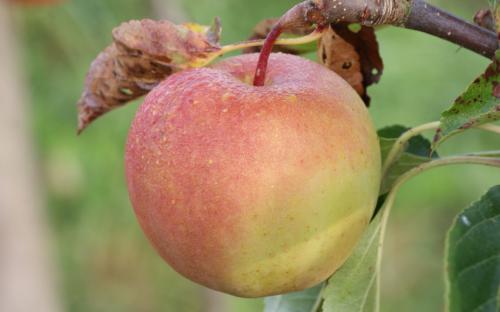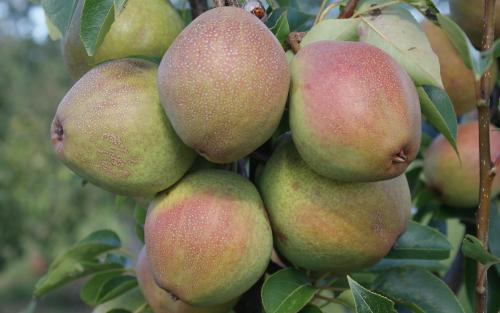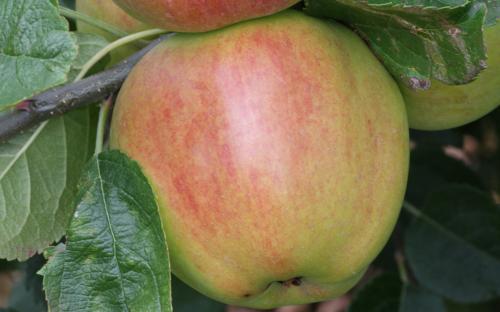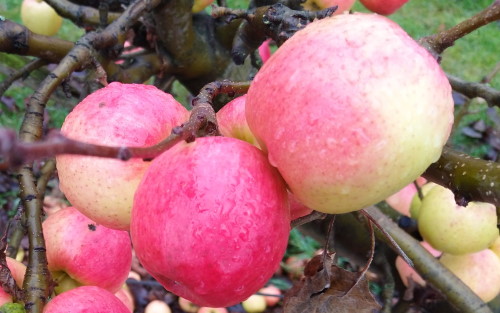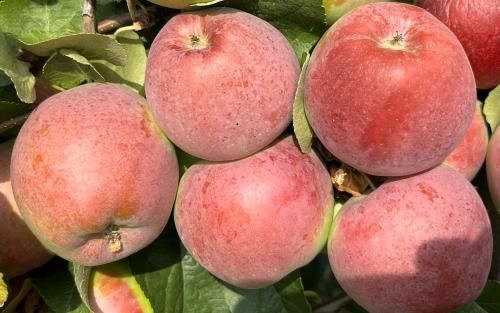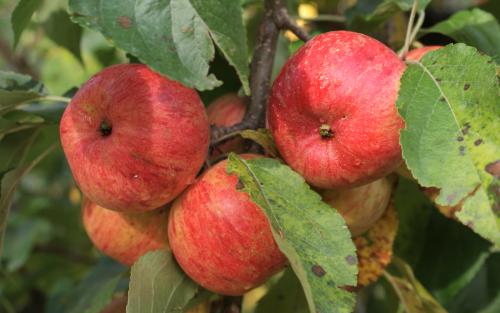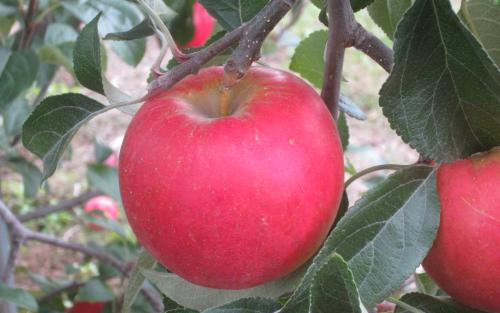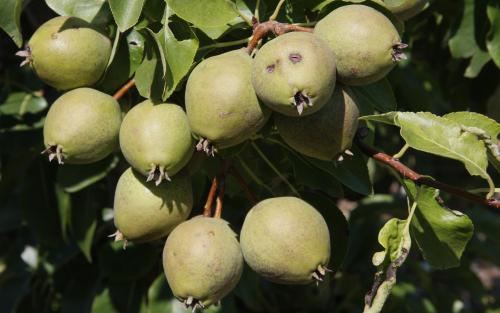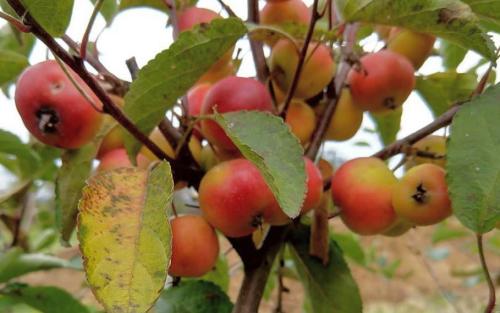Top 10 fruit trees for wildlife planting
- Browse by fruit species:
- Apple trees
- Crab apple trees
- Pear trees
- Perry pear trees
Wildlife planting usually means you want to encourage deer on to your land for hunting ... or to protect them from neighbors who hunt them nearby! However it can also mean planting fruit trees to provide a food resource for birds in late fall, or simply to create a conservation habitat on land you do not use. Varieties that are good for wildlife planting are also a good choice for vacation properties that you only visit periodically, as they usually won't need much care and maintenance.
In most areas food for wildlife is likely to be plentiful over the spring and summer, so the key period for wildlife planting is fall and winter. The best fruit trees for this purpose tend to be late-season apple and pear trees, especially varieties where the fruits remain hanging on the tree into late fall, or can be eaten on the ground over long periods. Fallen apples and pears are a valuable resource for deer, and also birds.
Fruit trees for wildlife planting probably won't get much care and attention after planting, compared to trees in the home orchard, so they need to be reliable disease-resistant and insect-resistant varieties. Make sure you choose varieties that will cross-pollinate each other too.
When planting for wildlife you will need to provide strong protection around the tree in its early years, because deer and rabbits love to strip the bark off young fruit trees. Chicken wire fencing is best. You will also need to water regularly at first, to help the trees get established, and keep the ground around clear of competing grass and weeds while they are young.
It is also generally best to choose trees grafted on vigorous standard or semi-vigorous rootstocks. Once established they will need less maintenance and won't have to rely on you for regular watering. Dwarf fruit trees can be used for wildlife plantings, but they will need staking and routine watering, so are only likely to be suitable in areas where there is reliable summer rainfall.
1st Apple trees - GoldRush
Buy GoldRush apple trees hereGoldRush is a modern disease-resistant apple, and a great choice for wild-life planting because the apples ripen very late, and stay on the tree well into late fall before eventually dropping to the ground.
2nd Pear trees - Kieffer
Buy Kieffer pear trees hereKieffer pear trees are ideal for wildlife planting. They are highly disease-resistant, self-fertile, and heavy-cropping, and the pears ripen in late fall.
Kieffer is a particularly good choice if you are in an area where fireblight is present as it seems to be highly resistant.
3rd Apple trees - King David
Buy King David apple trees hereThis old southern apple variety makes a great choice for wildlife planting. It grows reliably in almost any climate, with minimal effort on your part. You can pick the apples to eat yourself in October, but for wildlife purposes you can leave them on the tree - they won't fall until well into winter, meaning they stay accessible for deer and birds.
4th Apple trees - Cripps Pink
Buy Cripps Pink apple trees for southern california and the south-west hereCripps Pink is a late-season apple variety. The flavor is surely too good to leave to the deer and birds, and it is also it has only average disease-resistance, but we included it on this list because the apples will hang on the tree well into winter, meaning they will stay accessible to wildlife even in heavy snow.
5th Apple trees - Liberty
Buy Liberty apple trees hereLiberty is an excellent choice for wildlife and landscape plantings. It is heavy-cropping even in a no-spray regime. For human consumption and best flavor the apples should be picked as soon as they are ripe, but for wildlife they can be left on the tree.
6th Apple trees - Enterprise
Buy Enterprise apple trees hereEnterprise is a late-season eating apple, exceptionally disease-resistant, and therefore ideal for wildlife plantings because it is capable of producing lots of apples with minimal tree care.
7th Crab apple trees - Chestnut Crab
Buy Chestnut Crab crab apple trees hereChesnut Crab is a a large-fruited cold-hardy crab-apple. The profuse spring blossom is a great resource for bees, and the tree is very disease-resistant.
8th Apple trees - Pixie Crunch
Buy Pixie Crunch apple trees hereThe flavor of this modern disease-resistant apple is far too good to leave to the wildlife. However the tree is very productive and reasonably disease-resistant, and the apples tend to stay on the tree.
9th Perry pear trees - Yellow Huffcap
Buy Yellow Huffcap perry pear trees hereDeer may not appreciate this old English pear variety for th quality of its perry cider, but they will like the fact that the pears ripen late and hang on the tree into late fall.
10th Crab apple trees - Puget Spice
Buy Puget Spice crab apple trees hereThis recently-developed crab-apple is very resistant to diseases and its abundant spring blossom is great for bees. The large crab-apples ripen in October.

